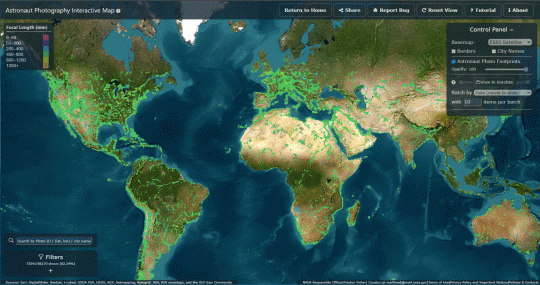ISS023-E-5251
| NASA Photo ID | ISS023-E-5251 |
| Focal Length | 800mm |
| Date taken | 2010.03.18 |
| Time taken | 13:40:38 GMT |
4288 x 2848 pixels 720 x 540 pixels 4288 x 2929 pixels 640 x 437 pixels
Country or Geographic Name: | CHILE |
Features: | LAKE OF NEGRO FRANCISO, SEIMENT, DRAINAGE, ROADS |
| Features Found Using Machine Learning: | |
Cloud Cover Percentage: | 10 (1-10)% |
Sun Elevation Angle: | 40° |
Sun Azimuth: | 67° |
Camera: | Nikon D2Xs Electronic Still Camera |
Focal Length: | 800mm |
Camera Tilt: | 21 degrees |
Format: | 4288E: 4288 x 2848 pixel CMOS sensor, RGBG imager color filter |
Film Exposure: | |
| Additional Information | |
| Width | Height | Annotated | Cropped | Purpose | Links |
|---|---|---|---|---|---|
| 4288 pixels | 2848 pixels | No | No | NASA's Earth Observatory web site | Download Image |
| 720 pixels | 540 pixels | Yes | Yes | NASA's Earth Observatory web site | Download Image |
| 4288 pixels | 2929 pixels | No | No | Download Image | |
| 640 pixels | 437 pixels | No | No | Download Image |
An astronaut aboard the International Space Station used a long lens to photograph an unusual lake in the high Andes Mountains of central Chile. Its two contrasting colors are separated by a narrow bank of sand. Dry desert washes lead down from adjacent highlands, spreading out as alluvial fans on all sides of the lake.
The contrasting colors of Laguna del Negro Francisco are controlled by the salt content of the water on either side of the sand bank. The 5 kilometer-long north basin is orange because it is shallow: evaporation results in salt accumulation that allows salt-loving algae to thrive. These organisms display different colors depending on the temperature and salinity of the water. Previous photos suggest that orange is an uncommon color for this lake, which is usually a light yellow-green.
By contrast, the south basin is fed by a larger watershed and is fresher, deeper, and more permanent. It is rich with wetland vegetation, and the depth of the water helps maintain a dark green color.
Strong westerly winds (from top left) blow most of the year and affect many landforms in the high Andean deserts. The winds promote wave action in the north basin, which is probably responsible for building the curved central sand bank. Wind has had a different effect on the south basin. Here the wind drives several slowly rotating water circulations in the deeper water. Over time, these currents sweep sand from the bank into the lake, forming short capes or spits. Sand spits are typical in shallow lakes, and have been observed by astronauts in other South American lakes.
Old shorelines ring Laguna del Negro Francisco, showing that water levels have been sometimes high enough in the past to drown the sand bank and make a single continuous body of water.


